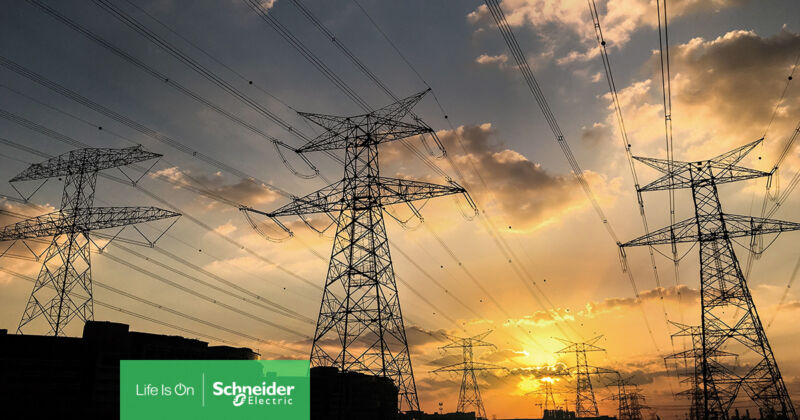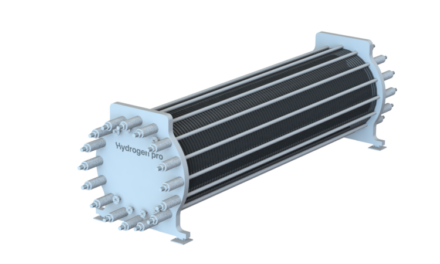The energy landscape, as we know it, is transforming in front of our eyes. Electric utilities are gearing up to transition to renewable generation due to the need for decarbonisation. Electric utilities are responsible for 25% of all carbon emissions globally. Cleaning up the electricity sector by removing polluting fossil fuels is key to achieving a low carbon economy. As a result, sustainability now has a firm place in board-level discussions for many businesses.
The more prominent focus and importance on setting net-zero targets will require robust strategies and a clear roadmap to achieving them. Setting the wheels in motion will involve many actions, including digital solutions to identify and measure the often ‘invisible’ energy waste. It also means applying clean and green electricity solutions that will make our homes, buildings, cities, transportation, and industry demonstrably more sustainable.
Decarbonisation will reshape every aspect of the utilities industry, including the need for more decentralised grid operations. Without a change in how we produce and distribute electricity, there won’t be a truly cleaner future. This is where smart, digital grids of the future come into play.
Where to start?
As the world moves towards a low carbon future, setting clear goals and putting plans in motion will be critical. Yet, according to our recent ‘Powering Change’ research, only two in five UK and Irish businesses (43%) have set a goal to be carbon neutral by 2030. Shockingly, just under half of businesses (47%) have committed to science-based targets. With less than a decade until the 2030 goal, these figures are worrying.
Furthermore, whilst climate action is a priority for many UK and Ireland businesses, more than two-thirds (69%) believe their organisation needs to act more quickly to reduce its carbon footprint. It comes down to knowing how to go about reducing it. Skills and resources continue to be a concern for businesses as four out of ten respondents were not confident their organisation has the necessary know-how and human resources to tackle decarbonisation.
Fortunately, there are easy wins that more UK and Ireland businesses could be taking advantage of. There are opportunities to deploy more technology that can pay for itself and reduce emissions. This is where digitalisation and automation of the grid are essential. Utilities can improve the grid’s reliability, quality, and efficiency while supporting sustainable management.
EV’s – a catalyst for a greener grid
Now that utilities begin to invest in upgrading the electrical network to drive net-zero grids by 2035, they will also be looking at ways to manage the uptake in renewable resources. This will be particularly important when looking at electric vehicles (EV).
Scrapping polluting petrol and diesel cars in favour of electric vehicles is a crucial way to reduce our carbon footprint and become the catalyst for new, decentralised grid infrastructure. 11.6% of UK and Ireland businesses say they have switched to an electric fleet.
Investment in charging infrastructure and a more decentralised grid needs to stay ahead of demand for EVs and cope with the increased demand for electricity consumption. 68.5% of business leaders in the UK and Ireland believe we will hit the milestone of 60% of global car sales being electric from 2030 on the road to net-zero. Harnessing a smarter grid will help create network efficiencies and avoid pressures caused by the increase in electricity. When it comes to mass-market EV adoption, this is the area businesses can drive.
The rise of the microgrid
The idea of one single overriding grid becoming obsolete is slowly becoming a reality. Instead, more of our energy supply will come from disparate renewable resources such as microgrids.
Microgrids will increasingly be deployed to power everything from university campuses to industrial operations and residential homes. They have quickly become a feature of energy-intensive buildings to ensure a resilient, cost-effective power supply. Still, we’re also seeing interest from mixed-use property developers wishing to boost capacity alongside access to the grid. According to our recent research, 25.4% of UK and Ireland businesses claim to have installed a microgrid to reduce their environmental impact.
In addition to linking to nearby renewable energy sources, their benefits include the ability to operate independently from the larger grid, boosting resilience as a backup to the larger electricity grid and reacting to power outages or unexpected peaks in demand. Fully automated, they can run in the background, taking decision making out of the hands of energy managers or financial directors about optimising electricity costs, lowering them due to reduced peak power requirements.
Switching to SF6-free
Sulphur hexafluoride (SF6) gas is the most potent greenhouse gas in the world, 23,500 times more powerful than CO2. Up until recently, it has been the only option for safe insulation of medium and high voltage electrical equipment, including primary and secondary switchgear. Yet, the growing expansion of electrical grid connections risks the gas being released into the atmosphere if not recycled correctly at the end of life.
However, the development of shunt vacuum interruption technology, combined with pure air, has resulted in a new pure air alternative that could dispose of all SF6 from the grid.
Sustainability is key for the future grid
With the digital economy taking off, increasing use of clean electricity, and adverse weather conditions threatening power supply interruptions – existing energy infrastructure is no longer fit for purpose. The digital economy will require 50% more power by 2030 than it consumes today.
This seismic energy transition significantly impacts the power supply and grid networks, which needs to be quickly addressed. Only by replacing outdated linear power grids built when energy flowed in one direction with smart bi-directional ‘grids of the future’ able to handle more intermittent power generation and multidirectional power flows. What’s more, smarter, connected technologies will enable intermittent renewables supply and increasing demand to be balanced without the need for massive increases in spending and grid reinforcements.
Grids must be digitised to support the energy transition. There will be little hope of achieving 2050 net-zero emissions targets without acting right now.
Author: David Hall, VP Power Systems at Schneider Electric UK & Ireland





